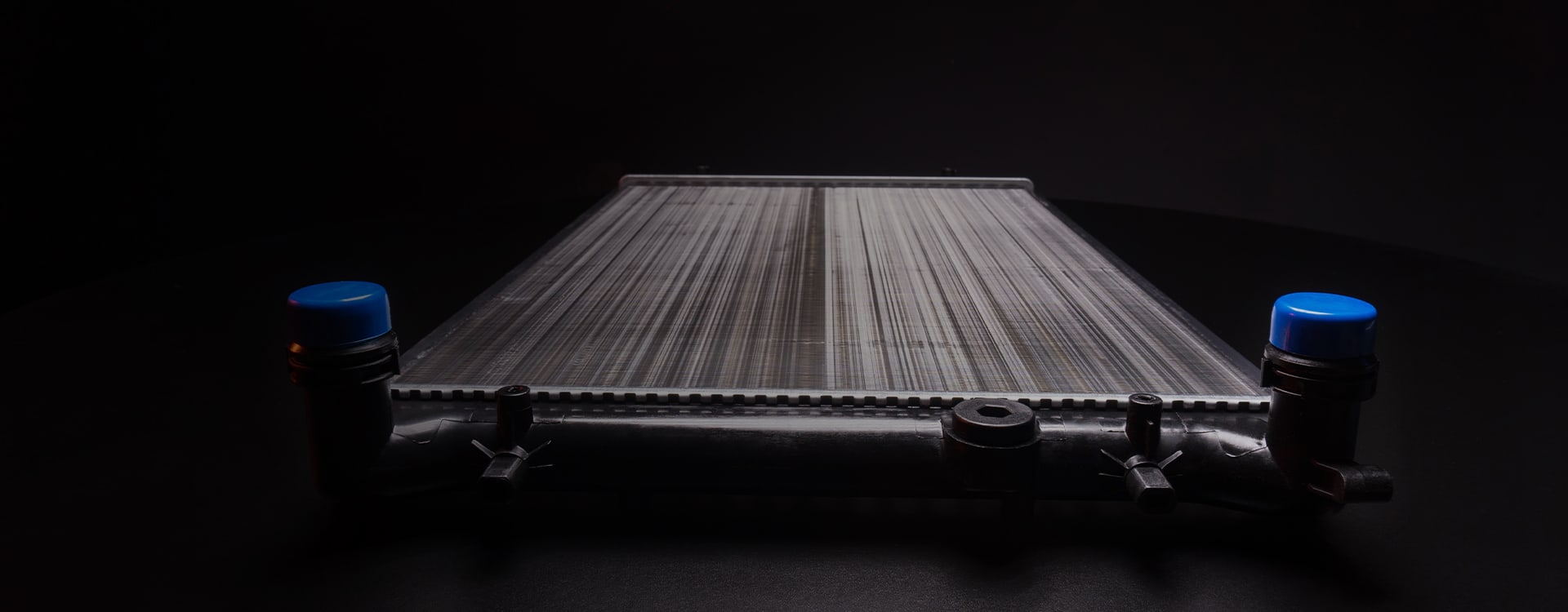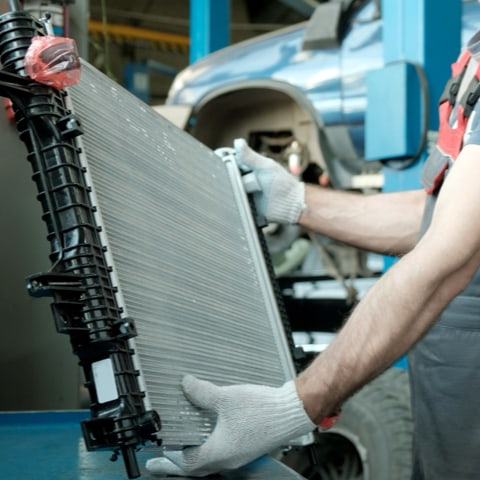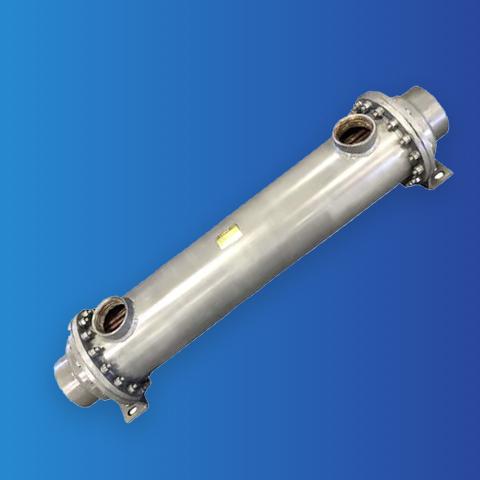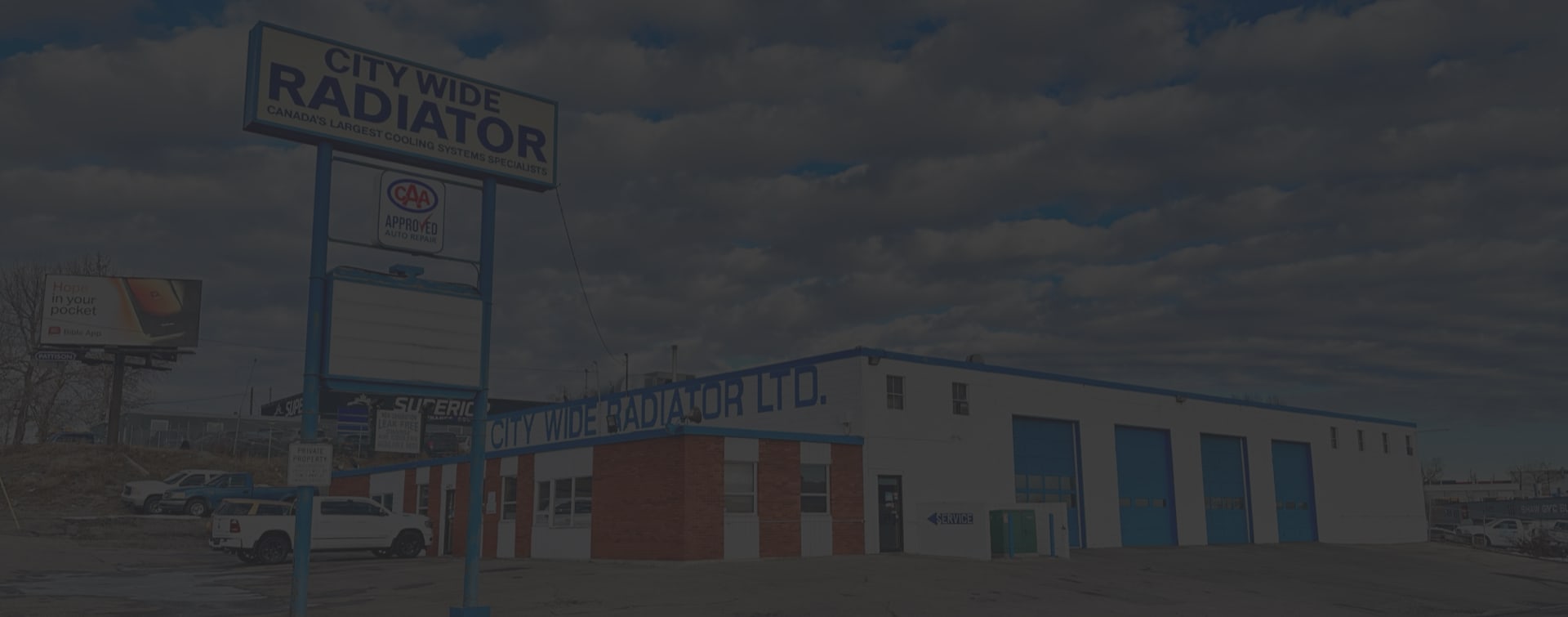When your car’s getting hot under the hood, you need to keep your cool. A sudden increase in engine temperature is just one sign that you may need to give your vehicle some attention—and not one you’d want to ignore! The last thing you want is your ride breaking down when you have someplace to be.
One important thing to consider when looking at your vehicle’s health is the health of your radiator. It’s easy to neglect this part of your car when you only think of the outside, but a radiator flush from an expert crew is necessary to keep things healthy and running smoothly.
Signs you may need a radiator flush can include overheating, brown coolant, a foul odour, sludge deposits, and low coolant levels.
WHAT DOES A RADIATOR FLUSH DO?
In simple terms, a radiator flush is a process of cleaning out your car’s cooling system, specifically the radiator. The radiator is responsible for keeping your engine from overheating by transferring heat from the engine to the coolant. The coolant moves this heat through the radiator so the outside air can cool it down.
Over time, debris, sludge, and rust can accumulate in the radiator, which can decrease its efficiency, leading to increased engine temperature, overheating, and even engine damage. A radiator flush can help remove such build-up like a powerwash to your cooling system!
THE BENEFITS OF A RADIATOR FLUSH
A radiator flush has several benefits, including:
- Prolonging the lifespan of your engine: A radiator flush removes contaminants that cause rust and corrosion, preventing the build-up of deposits that can damage the engine.
- Preventing overheating: As mentioned earlier, a radiator flush can prevent overheating, which can cause severe and costly engine damage.
- Improving fuel efficiency: Clean radiators run more efficiently, which can improve fuel economy, saving you money in the long run.
IS IT TIME FOR A RADIATOR FLUSH?
Here are some signs that your radiator is in need of some professional care.
YOUR ENGINE IS OVERHEATING
If your engine is overheating, it’s a sure sign that your radiator isn’t working properly. One of the reasons why an engine overheats is because the radiator is clogged with debris or corrosion. A radiator flush can remove all that debris and improve the cooling system, preventing your car from overheating.
RUSTY OR BROWN COOLANT
If your coolant is rusty or brown, it’s a clear indication that it’s old and has been contaminated by dirt and debris. The coolant helps regulate the temperature of your engine, and when it’s dirty, it can’t do its job properly. When you take your car to a mechanic for a radiator flush, they will flush your system with clean coolant and get rid of any accumulated dirt or debris.
FOUL ODOUR
If you notice a nasty smell coming from your car, it could be a sign you forgot those fries under the seat. Or, more relevant, it could be a sign of old and dirty coolant.
Coolant has chemicals that prevent corrosion, and when they break down, it creates a stinky odour. A radiator flush gets rid of the old, dirty coolant and replaces it with fresh coolant, improving the performance of your car and making it smell better, too.
SLUDGE DEPOSITS
Over time, deposits can accumulate in your radiator or cooling system, creating a sticky, gooey mess that sticks to the inside of your engine parts. It can block the flow of coolant, which means your engine might just start getting hot under the collar.
It can be hard to spot these deposits without some X-ray vision. You may notice some grumbling or groaning coming from under the hood, which could be a decent sign. You may also need to check the coolant itself. If you notice gunk floating around in it, then you can imagine where it came from. A radiator flush can help clear this sludge out.
LOW COOLANT LEVELS
You shouldn’t have to top up the coolant level in your car that much. In fact, low coolant levels usually mean you’re dealing with a leak. So, if you find yourself constantly topping up the coolant levels, it’s time to get a radiator flush.
Leakage or a blockage in your radiator can cause your coolant to escape and leave you running on empty. A radiator flush is one of the best ways to diagnose which system is causing the leak and fix it.
HOW OFTEN SHOULD YOU GET A RADIATOR FLUSH?
The frequency of radiator flushing varies depending on the make and model of your vehicle and your manufacturer’s recommendations. Some experts say every 5 years, others say 3 years. It really comes down to how often you drive your vehicle. A good rule of thumb is to consider a flush at least once every 50,000 km.
However, if you often drive in extreme weather, your engine runs hotter than usual, or you notice any of the signs we just went over, you may need to get a radiator flush sooner.

LEAVE IT TO THE PROFESSIONALS
You might be tempted to perform a radiator flush yourself to save a few bucks. But trust us, it’s not worth it. Radiator flushes can be complicated, and the process varies depending on the make and model of your vehicle. If not done correctly, the flushing process can do more harm than good to your radiator, engine, and other components.
At City Wide Radiator, radiators are what we do. It’s in our name. We follow a specific flushing process that determines the best flushing liquid, temperature, and time needed to clean the system effectively. With our specialized equipment and years of experience, we can diagnose and fix underlying issues, replace coolant, and prevent future and expensive engine problems.
If things are getting too hot to handle, don’t sweat it. Contact us and ask about a radiator flush.











